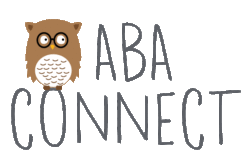Generalization
Baer, Wolf, and Risely (1968) included “generality of behavior change” as one of their 7 dimensions of applied behavior analysis. Generalization of behavior change occurs when that behavior occurs outside of the learning environment. Generalization can happen across 1) settings, 2) time and 3) across people and exists when the behavior occurs in these various dimensions without relearning.
Response Maintenance is the continuation of a learned behavior after the intervention has been removed. The learned behavior is still in place after a portion to all of the intervention is no longer present. For example, take Jimmy, who learns to complete his homework via the use of a token board after each correct answer. If, when the token board is not longer used, Jimmy continues to complete his homework at the criteria level, then response maintenance has occurred. It is important to probe, or test, for maintenance over time to ensure that the learner has retained this new skill.
Setting / Situation Generalization has occurred when the behavior of interest occurs in a setting other than in the one that it was taught (instructional setting).
Response Generalization is the extent to which the learner can issue a behavior that is functionally equal to the behavior that was taught. This is the case of stimuli that occasion novel responses. For example, if Sally learned to pick up a phone and talk on it with a friend, she has response generalization if she can also pick up a walkie talkie and use it to talk to a friend.
Over-generalization is a layman’s term for when a behavior under stimulus control is too broad. This can also be referred to as “undesired response generalization” and results when a learner’s training results in generalization that causes poor performance or undesired results. For example, if a child learns to open the door when the doorbell rings during the day, if he also opens the door any time the phone makes a ringing sound similar to the door chime, that would be over-generalization.
Stimulus Generalization refers to when different, but physically similar stimuli, evoke the same response. It is also known as a loose degree of stimulus control. For example, if a child says, “Josie” in the presence of his black and white cat, stimulus generalization would be observed if he said, “Josie” in the presence of his neighbors black and white dog or in the presence of a skunk. However, stimulus generalization doesn’t always mean a greater degree of stimulus control is needed. For example, if a child was taught how to use the potty on only one toilet, his ability to go potty on different toilet in another environment would demonstrate stimulus generalization.
Stimulus Discrimination occurs when a stimuli evoke a different response. For example, not all snakes are poisonous. My husband knows how to tell the difference between poisonous snakes and non – he has discriminated these stimulus and will catch a non-poisonous snake but avoid a poisonous one.
It is important to note that a behavior analyst should always program explicitly for generalization and never assume that generalization comes “for free.” Programming for generalization consists of 1) targeting the behavior and identifying natural reinforcement and 2) indicating the different environments, people and times that create an opportunity for generalization.



This is the perfect web site for anybody who would like to understand this topic. You know so much its almost tough to argue with you (not that I actually will need to…HaHa). Excellent stuff, just great!|
very simplistic and concise definitions. The examples make the terms easier to understand. such a great website
I’m sorry to criticize, but please check your example for stimulus generalization with Cooper. I believe you have explained over-generalization. I didn’t read any of the others – I’m prepping for the exam myself. But your answer popped up first for a Google search and could be causing confusion. All the best!
Thank you for your comment, we really appreciate it. We’ve updated that paragraph to help eliminate any confusion and provide a more accurate example. Best of luck!!
Hi there, I would like to use a part of this as a reference in an assignment, can you please tell me the name of the author please?